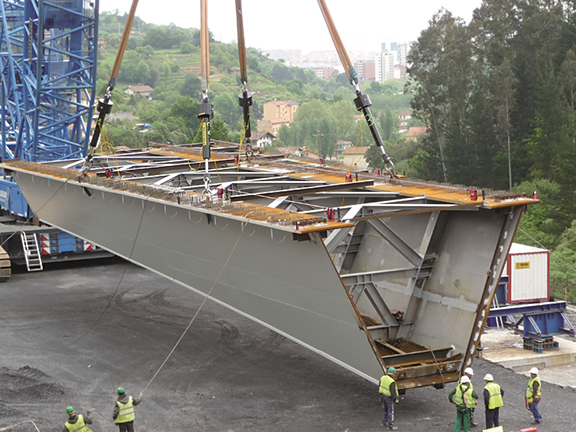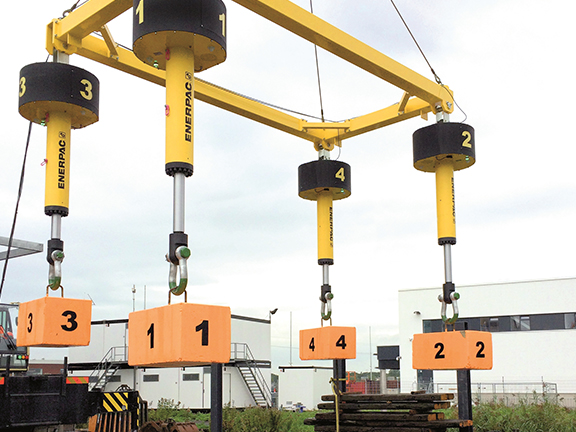Enerpac Australasia has released the SHAS series synchronous hoist system that enables a single crane to precisely position heavy and unbalanced loads weighing hundreds of tonnes.
The SyncHoist system consists of a below-the-hook crane attachment operated by a single wireless controller.
It has four double-acting, push-pull cylinders connected to lifting points above the load by cables or under an optional auxiliary frame. The cylinders come in 110 tonne and 225 tonne lifting capacities, with plunger strokes of 1m and 1.5m.
They are capable of high-precision lifting accuracy of +/- 1 mm over the full stroke, Enerpac says.
Each double-acting cylinder features integrated pump and controls, a system that eliminates the need for an external power pack and removes the complexity of hydraulic hoses and connectors.
Because each cylinder can lift or lower independently, the system can perform several types of movements, including synchronous lifting and lowering, balancing and tilting, all of which can be pre-programmed or controlled by the operator.
“Wireless remote control means a single operator can control the SyncHoist while moving around the lifted load at a safe distance, observing the lift in progress and making real-time adjustments,” Enerpac Australasia integrated solutions manager Warren Baltineshter says.
“SHAS technology is applicable to all industries where tower, crawler, mobile and overhead cranes are used to lift odd-shaped loads with off-centres of gravity,” he adds.
“SHAS systems are especially useful for fine positioning of loads because of their outstanding control, safety and time-saving cost-efficiency.”
Among the applications the SHAS series synchronous hoist system would be suited to are:
- Positioning of roof sections, road and rail bridge sections, concrete elements and steel structures;
- Positioning of turbines, transformers and fuel rods and electrical plant including wind turbine nacelles, rotor heads and blades;
- Precise machinery loading, mill rod changes, bearing changes;
- Precise positioning of pipelines and blow out valves; and
- Positioning and aligning of ship segments prior to assembly.



